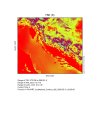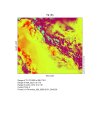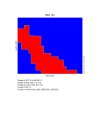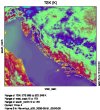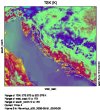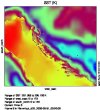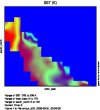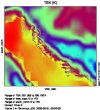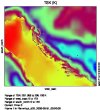Today I have noticed these weird squares in the simulations over the Adriatic. Turns out this is the consequence of the ERA5's SST resolution (which is, as are all ERA5 variables, 1/4 of a degree). My question is - what kind of impact can I expect from keeping the resolution of SST as-is? Discontinuities are rarely a good thing and they look wonky. Also, there is another field called TSK (skin temperature) where this effect is particularly visible - is it derived from SST and T2 or is it the input? I am asking since TSK is one of the fields that was required for running WRF when I downloaded the data in the first place.